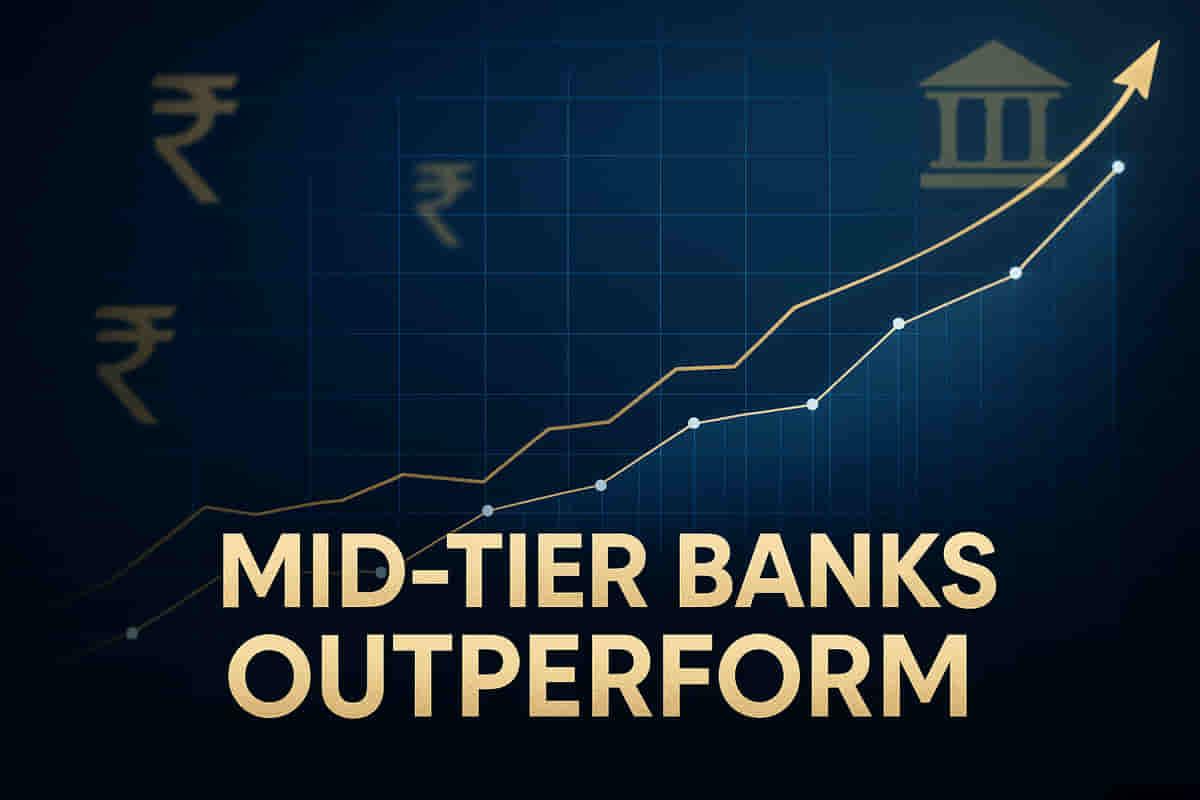Mid-Tier Indian Banks Exhibit Strong Fundamentals Amidst Market Oversight
Banking/Finance
|
Updated on 31 Oct 2025, 12:30 am
Reviewed By
Aditi Singh | Whalesbook News Team
Short Description :

▶
Stocks Mentioned :
Detailed Coverage :
While major banks like State Bank of India, HDFC Bank, and ICICI Bank often dominate financial news, several mid-tier Indian banks are quietly building strong financial performance that warrants investor attention. Indian Bank, Union Bank of India, and Federal Bank are highlighted for their consistent advancements in key financial ratios such as Return on Equity (ROE), Net Interest Income (NII), and reduction in Gross Non-Performing Assets (GNPA) over the last three years. This trend emerges as the Indian banking sector undergoes a transformation, marked by a ten-year low in non-performing assets and a resurgence in credit demand post-pandemic. Notably, public sector banks have recently outpaced private lenders in loan growth for the first time in 14 years, bringing renewed focus to previously overlooked institutions. Indian Bank shows steady net profit growth and declining GNPA, with a competitive P/E ratio. Union Bank of India demonstrates improved profitability and risk control, boasting a significant net profit increase and a lower P/E ratio. Federal Bank has consistently reduced NPAs and shown profit growth, with a P/E ratio comparable to its private peers. These banks represent a blend of public and private entities with strengthening fundamentals, positioning them as potential 'dark horses' for future market rallies. Investors are advised to look for banks with clean balance sheets that may not yet be fully valued by the market.
Impact This news is likely to positively influence investor sentiment towards these specific mid-tier banks and potentially other similar financial institutions, encouraging a deeper analysis beyond market leaders and highlighting potential value opportunities. Rating: 7/10
Difficult Terms: Return on Equity (ROE): A measure of how much profit a company generates for each unit of shareholders' equity. It indicates how efficiently a company is using its equity to generate profits. Net Interest Income (NII): The difference between the interest income a bank earns from its lending activities and the interest it pays out to its depositors. It's a key measure of a bank's profitability. Gross Non-Performing Assets (GNPA): The total value of loans that have gone bad, meaning the borrower has failed to make interest or principal payments for a specified period. A declining GNPA indicates better loan quality. Net Interest Margin (NIM): The difference between the interest income generated by a bank and the interest it pays out to its lenders, expressed as a percentage of its interest-earning assets. It reflects a bank's profitability on its assets. CASA Ratio: Stands for Current Account Savings Account. It represents the proportion of a bank's total deposits that come from these low-cost accounts. A higher CASA ratio generally means lower funding costs for the bank. P/E (Price-to-Earnings) Ratio: The valuation metric that relates a company's share price to its earnings per share. It indicates how much investors are willing to pay for each dollar of earnings. A lower P/E can suggest an undervalued stock. Public Sector Banks (PSBs): Banks where the majority stake is held by the government. Private Lenders: Banks where the majority stake is held by private individuals or institutions. Credit Cycle: The phases of expansion and contraction in the availability and demand for credit in an economy. A strong credit cycle implies increased lending and borrowing. Retail Lending: Loans provided to individuals for personal use, such as home loans, car loans, and personal loans. Asset Quality: Refers to the risk associated with a bank's loans and other assets. It is often assessed by looking at NPAs and loan loss provisions. Investor Presentation: A document provided by a company to investors, usually containing financial data, business strategy, and performance highlights. Median P/E: The middle value in a set of P/E ratios for a group of comparable companies.
More from Banking/Finance

Banking/Finance
SEBI is forcing a nifty bank shake-up: Are PNB and BoB the new ‘must-owns’?
Latest News

Auto
Suzuki and Honda aren’t sure India is ready for small EVs. Here’s why.

Brokerage Reports
Stocks to buy: Raja Venkatraman's top picks for 4 November

Mutual Funds
Quantum Mutual Fund stages a comeback with a new CEO and revamped strategies; eyes sustainable growth

Tech
Why Pine Labs’ head believes Ebitda is a better measure of the company’s value

Industrial Goods/Services
India’s Warren Buffett just made 2 rare moves: What he’s buying (and selling)

Startups/VC
a16z pauses its famed TxO Fund for underserved founders, lays off staff
Energy Sector

Energy
India's green power pipeline had become clogged. A mega clean-up is on cards.
Renewables Sector

Renewables
Brookfield lines up $12 bn for green energy in Andhra as it eyes $100 bn India expansion by 2030
Energy Sector

India's green power pipeline had become clogged. A mega clean-up is on cards.
Renewables Sector
